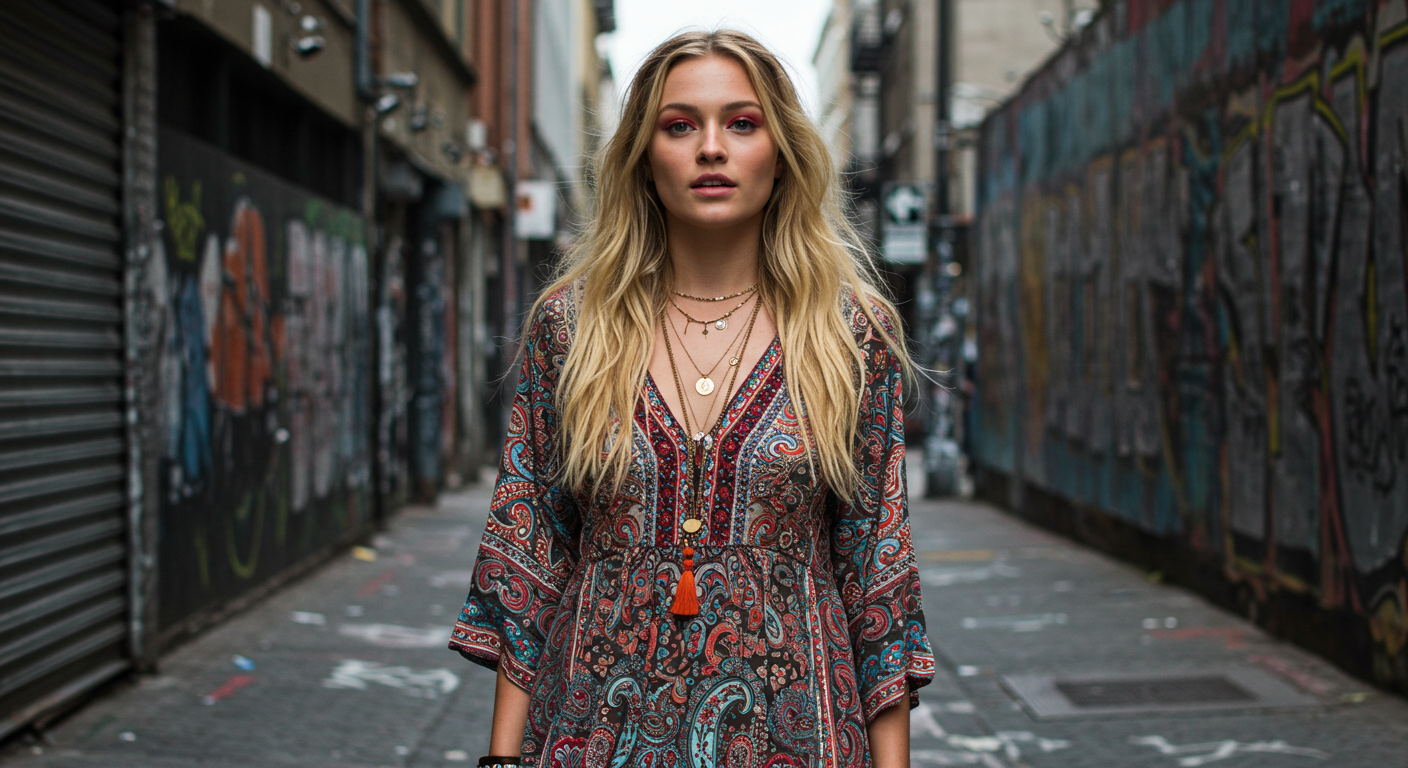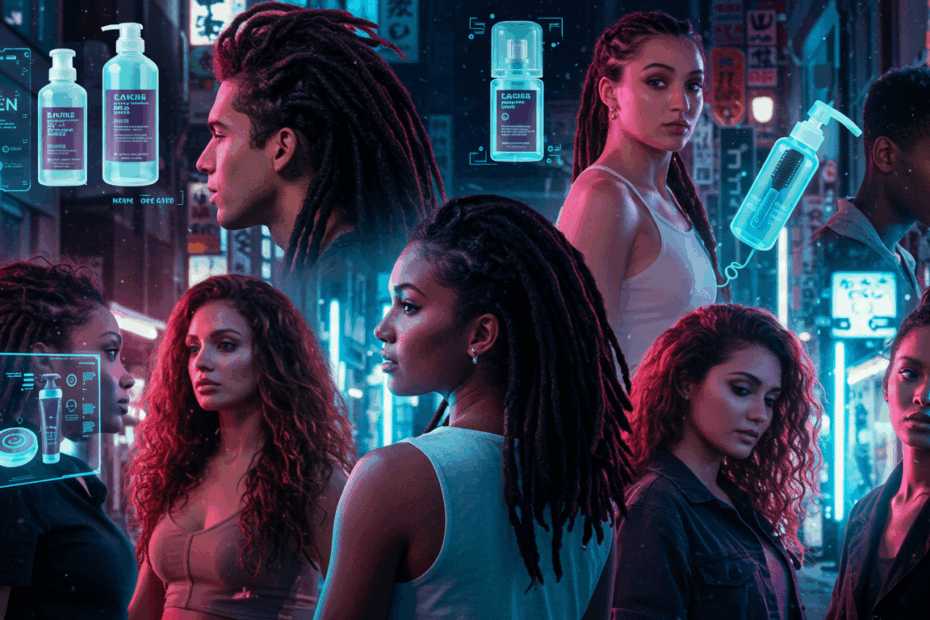
John: Welcome, readers, to our deep dive into one of the most dynamic and personal topics in the world of style: the “locks, hair” lifestyle. It’s a term that’s become a vast umbrella, covering everything from specific, culturally rich hairstyles to the general pursuit of healthy, beautiful hair. When you search for it, you don’t find one single answer; you find an entire ecosystem of products, communities, and forms of self-expression. Our goal today is to navigate this world together, providing a clear, comprehensive guide for beginners and enthusiasts alike.
Lila: That’s so true, John. When I first started looking into this, I was amazed by the variety. One click leads you to a “perfect locking gel for dreadlocks,” the next to a tutorial for “dreamy, boho locs,” and another to a discussion about “luscious locks” in a general sense. It can feel a bit overwhelming. Where do we even begin to untangle what “locks” really means in today’s culture? Is it a specific style, a type of product, or just a catch-all term for… well, hair?
John: An excellent question, and it gets right to the heart of the matter. The best way to understand it is to see it as all of the above. The term has evolved. Let’s start with the foundation, the literal definition, and then build out from there to see how it has expanded into the rich tapestry we see today. We’ll break down the key pillars: the definition itself, the specific hairstyle known as locs, the universal quest for healthy hair, the transformative world of extensions, and the vibrant community that ties it all together.
Lila: I love that approach. A roadmap is exactly what a beginner needs. So, let’s start with the basics. What is the dictionary-approved, old-school definition of a “hair-lock”?
John: According to the Collins Dictionary, the definition of a ‘hair-lock’ is quite simple: it’s “a curl of the hair of the head.” This is the classic, romantic notion of a lock of hair—a single tress or curl. Think of historical keepsakes or the poetic descriptions of a hero’s flowing hair. But language, like style, evolves. While that definition is still technically correct, in contemporary use, “locks” has taken on a much broader and more significant meaning, especially in online communities and marketing.
Lila: So it’s grown from a single curl to a whole concept. You see phrases like “luscious locks” and “love your locks” everywhere. For instance, the Bare Bar has a product called “Love Your Locks Hair Serum.” They’re not talking about one curl; they’re talking about your entire head of hair. But then you also see the term “locs,” spelled L-O-C-S, which seems to refer to a very specific hairstyle. How are these two related, and what’s the difference?
John: You’ve pinpointed the most crucial distinction. On one hand, “locks” (with a ‘k’) is often used as a colloquial, affectionate term for all of one’s hair. It’s evocative and positive. A brand like Goldie Locks® uses it to create a sense of luxury and personal care, promising “Gloss, glow, greatness.. on cue.” It’s about achieving your best hair, whatever your hair type may be. On the other hand, “locs” (without a ‘k’), which is often used interchangeably with “dreadlocks,” refers to a specific hairstyle created by matting or braiding hair into rope-like strands. This is a style with deep cultural roots and a dedicated maintenance regimen.
Lila: Okay, that clarifies a lot. And I even saw another variation. A Justdial listing for services in Delhi mentioned “Side locks, also known as sideburns.” So the term can also refer to specific patches of hair on the face. It’s incredibly versatile.
John: Precisely. It shows how context is everything. For the purpose of our guide, we’ll focus on the two dominant meanings: the specific hairstyle of “locs” and the general pursuit of healthy “locks.” Let’s begin with the hairstyle, as it’s a profound journey for those who choose it.
Lila: I’m glad we’re starting there. The communities around locs are so passionate. I was scrolling through a Facebook group called “Dreadlock Lovers group (DREAD-IT),” which has over 1.2 million members! Someone posted, “Need see short locks hair styles loct for 1 year,” and the comments flooded in with pictures and advice. It’s clearly more than just a hairstyle; it’s a shared experience. So, for someone new to this, what does embarking on a locs journey entail?
John: It’s a commitment, first and foremost. Unlike hairstyles you can change weekly, locs are developed over months and years. The process involves encouraging sections of your hair to “lock” together. This requires patience and a very specific care routine. The primary concern is maintaining moisture and scalp health while encouraging the locking process. This is where specialized products become essential. For example, Lion Locs makes a “Hair Locking Dreads Moisturizer,” which is advertised as a “perfect locking gel for dreadlocks.” Its description highlights two key benefits: it “prevents hair loss and promotes healthy hair growth for dry and damaged hair.”
Lila: That makes sense. You’re essentially training your hair to form a new structure, so you’d need products that support its integrity. Are there different ways to start or style locs? I saw a YouTube tutorial from HairDeLaCreme for “Mermaid Locs” that looked incredible. The creator described them as “dreamy, boho locs” and used human hair crochet braids. It seems like there’s a lot of room for creativity.
John: Absolutely. The creativity within the locs community is boundless. There are numerous methods to start locs—such as two-strand twists, braids, comb coils, or interlocking—and each creates a different texture and look. The “Mermaid Locs” you mentioned are a perfect example of a modern, stylistic evolution. They often incorporate loose, wavy ends to give that bohemian, free-flowing effect. People also experiment with size, from very thin microlocs to thicker, traditional locs. Inspiration is everywhere, particularly on visual platforms. A Pinterest board like Caneldra Person-Harrison’s “Locks Hair Styles” is a treasure trove of ideas, showcasing countless variations in length, color, and styling, from elegant updos to simple, everyday looks.
Lila: So you have the foundational journey of growing the locs, and then this whole world of styling on top of it. It sounds like a deeply personal form of art. What are the biggest challenges someone with locs might face, based on the products we’re seeing?
John: The main challenges are preventing dryness, build-up, and breakage. The structure of a loc can make it prone to trapping lint and product residue if not washed properly. It can also become dry and brittle without consistent moisture. This is why you see so many products focused on lightweight hydration. The Lion Locs moisturizer, for example, is designed to be effective without causing build-up. The overall goal is to have locs that are not just stylish but also healthy, strong, and clean from the inside out. It’s a discipline of care that pays off in a truly unique and powerful aesthetic.
Lila: I love that. It’s a discipline of care. Now, let’s pivot to that other meaning—the more general idea of achieving “luscious locks.” This feels like a universal goal for so many people, regardless of their hair type or style. A Facebook post from Beauty Hills Salon put it perfectly: “Say goodbye to hair damage, and hello to luscious locks!” So, for the person who doesn’t have locs but just wants beautiful, healthy hair, what’s the game plan?

John: The game plan for “luscious locks” is a multi-pronged strategy focused on restoration and maintenance. The same salon you mentioned states that “hair & Scalp treatments are the ultimate solution to restore and revive your hair.” This tells us that true hair health starts at the root—with the scalp. A healthy scalp creates the optimal environment for hair to grow strong. But the care doesn’t stop there. It extends to every part of the hair care routine, from how you wash and dry your hair to the products you use to style it.
Lila: Let’s break that down. You mentioned drying. I often just use a regular bath towel, but I’ve heard that can be damaging. Is there a better way?
John: There is. This is a perfect example of how small changes can make a big difference. Rough cotton towels can create friction, which ruffles the hair cuticle, leading to frizz and breakage. A brand called Lushlocks directly addresses this with their microfiber towels. Their promise is that these towels “reduce friction and breakage, soak up excess water fast, and banish frizz for smoother, shinier results.” It’s a simple switch, but it’s a foundational step in preventing damage before you even apply any products.
Lila: A microfiber towel. Noted! Okay, so once the hair is gently towel-dried, we move on to products. The market is saturated with oils, serums, creams… it’s a lot. I saw a *Times of India* article that listed the “8 best hair oils for dry and damaged locks.” Where do oils fit into a routine?
John: Oils are fundamental, especially for restoring moisture and nourishing the hair shaft. They are often rich in vitamins, fatty acids, and antioxidants. The *Times of India* piece highlights this as “beyond basic maintenance.” They specifically recommend several types, and each has unique benefits. For instance, `Argan oil`, which is one of the most popular, is fantastic for its moisturizing and shine-enhancing properties without being overly greasy. Jojoba oil is excellent because its molecular structure is very similar to the natural sebum our scalp produces, so it’s easily absorbed. Olive oil is a heavier, deep conditioner, while almond oil is rich in Vitamin E, which is great for hair strength.
Lila: And they also mentioned Castor oil and even Curry leaves. Castor oil always comes up in conversations about hair growth. What’s the science there?
John: While direct scientific evidence linking castor oil to faster hair growth is still developing, it is incredibly rich in ricinoleic acid, an omega-9 fatty acid. This acid is believed to increase circulation to the scalp, which in turn can promote healthier follicles. It’s also a very thick, heavy humectant, meaning it draws moisture into the hair shaft, making it excellent for preventing the kind of dry, brittle strands that lead to breakage. It’s a powerful conditioning agent. The key with oils is to find the one, or the combination, that works best for your hair’s porosity and texture.
Lila: So oils are for deep nourishment. What about serums? I see things like “Love Your Locks Hair Serum” from The Bare Bar. It’s described as a “lightweight, silicone-free formula enriched” to “Tame the frizz, boost the shine, and show your strands some floral-powered love.” How does a serum differ from an oil?
John: Generally, serums are formulated for styling and finishing, while oils are for treatment and deep conditioning. A serum typically sits on the surface of the hair to create a protective, smoothing layer. The Bare Bar’s silicone-free formula is a key selling point here. Many serums use silicones to create that smooth, glossy feel, but some people find they can build up over time. A silicone-free option provides that frizz control and shine using other ingredients, like botanicals or lighter oils. You can think of a serum as the final coat of polish. It’s designed to perfect the look of the hair and protect it from environmental stressors like humidity.
Lila: That makes perfect sense. Oil is for health, serum is for finish. And it’s not just for adults. I saw a product from Tuco Kids called “Juicy Locks Hair Oil.” It’s “crafted for kids aged 3-15” and aims to help with “dry, unruly hair and dandruff.” It’s enriched with Mint, Ginger, and Coconut Oil. It’s interesting to see such specialized care starting so young.
John: It is, and it speaks to a growing awareness that good hair care habits should start early. Using natural ingredients like Coconut Oil for moisture, Mint for a soothing, tingling sensation on the scalp, and Ginger, which has anti-inflammatory properties, shows a thoughtful approach to children’s delicate scalps and hair. It’s about building a foundation of health from the beginning.
Lila: Okay, so we’ve washed, gently dried, treated with oil, and finished with serum. What about styling products that provide hold? I sometimes struggle to get my style to last all day. I came across StyleMake Hair Lock Spray, which claims to be the “best!” with “Extreme hold that actually lasts, without feeling stiff or sticky.”
John: Hairspray is the classic finishing touch for hold, and modern formulas have come a long way. The “stiff or sticky” feeling, often called “helmet head,” is what many people want to avoid. A product like StyleMake’s, which promises extreme hold with a natural feel, is the holy grail for many. It’s designed to “set any type of hair,” indicating its versatility. This type of product works by coating the hair strands with polymers that create a light, invisible scaffolding, holding them in place without weighing them down. It’s the final step to ensure your meticulously styled locks stay put, whether it’s a sleek ponytail, defined curls, or a voluminous blowout.
Lila: This is a fantastic overview of products. But what if you want a more dramatic, immediate change? Say, more length or volume. The search results were filled with hair extension businesses. This seems like a whole other level of achieving your dream “locks.”
John: You’re right, Lila. Hair extensions are a transformative option for those seeking an instant change in length, volume, or even color without a long-term commitment. This industry has become incredibly sophisticated, moving far beyond the synthetic-looking clip-ins of the past. The focus now is on quality, natural appearance, and expert application. We see this reflected in the branding of companies like Salty Locks, which offers “Luxury European Hair Extensions,” and Angelslocks, a “Multi award winning high quality 100% human hair extension supplier.”
Lila: The quality factor seems huge. I saw a review on the Perfect Locks website that said, “The quality of the hair is amazing, super natural, and it matches my natural curl pattern so perfectly.” What makes one set of extensions higher quality than another? What should a consumer look for?
John: The primary factors are the source of the hair and how it’s processed. The most sought-after extensions are made from 100% human hair, specifically Remy hair, where all the cuticles are kept intact and aligned in the same direction. This prevents tangling and helps the extensions blend seamlessly with your natural hair. Salty Locks emphasizes this by stating their extensions are “Handcrafted by European artisans” and their “blonde and brown shades stay true to their natural tones without harsh chemical processing.” This minimal processing results in hair that is stronger, healthier, and looks and feels more natural, as the Perfect Locks review you mentioned confirms.
Lila: That’s fascinating. So it’s not just about adding hair, but about adding *quality* hair that behaves like your own. I also stumbled upon something really specific from Glamour Locks Hair Extensions. They mentioned their “Crown Fusion is a semi permanent solution to hair loss for the top of your head.” This sounds different from typical extensions. Can you explain what that might be?
John: This is a brilliant example of how the industry is innovating to provide targeted solutions. Traditional extensions are usually applied to the sides and back of the head to add length and overall volume. However, many people experience thinning specifically at the crown or parting. A wig is one solution, but Glamour Locks positions their “Crown Fusion” as something “more perminate than a wig.” While the exact technique isn’t detailed, a semi-permanent crown solution typically involves integrating a high-quality hairpiece into your existing hair at the top of the head. It’s designed to be worn for several weeks at a time, allowing you to wash, sleep, and live in it, offering a more seamless and less cumbersome solution for targeted hair loss.
Lila: Wow, that’s life-changing for someone dealing with that. It shows that the “locks” lifestyle is also about restoration and confidence, not just fashion. This brings me to my next thought: the people behind all of this. We’ve talked about products and styles, but the search results also point to salons, stylists, and a whole community. How important is the human element in all of this?

John: The human element is arguably the most important part. A product is only as good as its application, and a style is only as successful as the expertise behind it. This is where professional hairdressers and specialized boutiques come in. Take Vintage Locks Hair Boutique, for example. Their Instagram profile highlights that they are “Hairdresser owned” with “17 years industry experience” and specialize in the “Highest standard cutting|colouring|extensions.” This level of experience is invaluable. A seasoned stylist can assess your hair type, bone structure, and lifestyle to recommend and execute a look that is not only beautiful but also sustainable for you.
Lila: And these boutiques have such a strong online presence. Vintage Locks has over 3,300 followers, and Glamour Locks has over 6,700. They use Instagram to showcase their work, creating a portfolio that builds trust and inspires potential clients. It’s like a digital consultation. You can see their skill before you even book an appointment.
John: Exactly. Social media has democratized style inspiration. It connects clients directly with the artists. Beyond individual stylists, you have massive communities like the “Dreadlock Lovers group (DREAD-IT)” on Facebook. With 1.2 million members, it’s a global salon where people share progress photos, ask for urgent advice, recommend products, and simply find solidarity in their hair journey. This digital community provides support that might not be available in someone’s immediate physical environment, especially for a niche and committed style like locs.
Lila: It really fosters a sense of belonging. The language used is also so positive and aspirational. I keep thinking about phrases like “show your strands some floral-powered love” or “Gloss, glow, greatness.. on cue.” It’s not just about fixing a problem; it’s about celebrating and loving your hair. It frames hair care as a form of self-care.
John: That’s a perfect summation. The “locks, hair” lifestyle, in all its forms, is ultimately about the relationship you have with your hair. Whether you are cultivating locs as a form of cultural expression, using serums and oils to achieve the healthiest version of your natural hair, or choosing extensions to realize a specific vision of yourself, it is an investment of time, resources, and care. It’s a deeply personal journey of identity.
Lila: So, to bring it all together for our readers, what’s the final takeaway? If someone is standing at the beginning of this journey, what’s the one piece of advice you’d give them?
John: My advice would be to start with research and self-assessment. Understand your hair type, your lifestyle, and what you truly want to achieve. Are you drawn to the commitment and artistry of locs? Or is your goal to have the healthiest, shiniest version of your current style? From there, explore the resources available. Look at the Pinterest boards, join the Facebook groups, read the product reviews, and find a professional stylist whose work resonates with you. This isn’t about chasing trends; it’s about crafting a personal style that makes you feel authentic and confident.
Lila: I couldn’t agree more. It’s a journey, not a destination. Whether you’re nurturing year-old locs, taming frizz with a new serum, or exploring the world of high-quality extensions, the “locks” lifestyle is about embracing your hair as a vital part of who you are. It’s about giving it the attention and care it deserves, and in doing so, showing a little more love to yourself. From handcrafted European extensions to a simple microfiber towel, every choice is a step towards making you feel like your best self.
